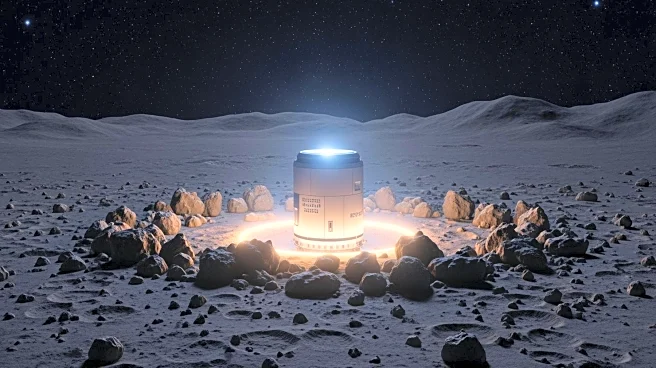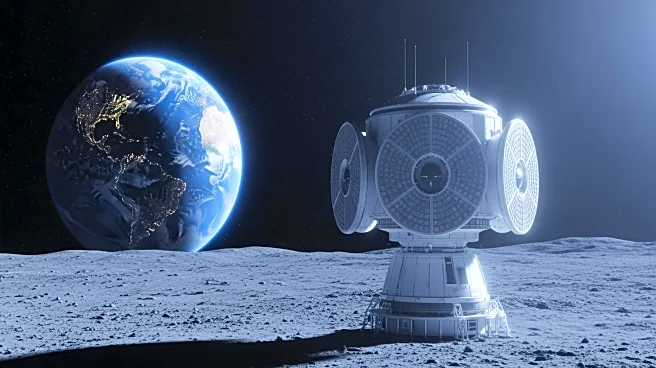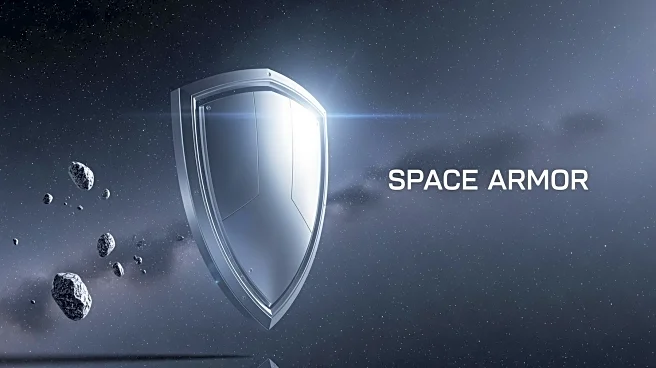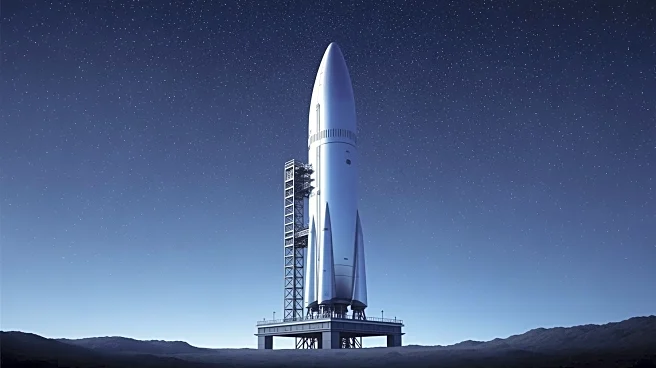What's Happening?
Atomic-6, an American aerospace manufacturing company, has developed a new material called 'space armor' designed to protect satellites and astronauts from orbital debris. This innovation comes amid increasing
concerns about space debris, particularly from the growing number of satellites launched by companies like SpaceX. Space armor is made using a composite-to-resin method and consists of lightweight tiles that can shield against debris smaller than 3mm, which constitutes 90% of the debris in low Earth orbit. The company claims that traditional satellite shielding can contribute to secondary debris, whereas space armor offers a more sustainable solution. Atomic-6 plans to begin launching satellites equipped with space armor by 2026.
Why It's Important?
The development of space armor is significant as it addresses the growing threat of space debris, which poses risks to both satellites and astronauts. With the increasing number of satellites in orbit, the likelihood of collisions and damage from debris is rising. This innovation could enhance the safety and longevity of space missions, potentially reducing costs associated with damage and repairs. Additionally, space armor could play a role in mitigating geopolitical tensions in space, as it offers protection against adversarial spacecraft from countries like Russia and China. The successful implementation of space armor could lead to advancements in space exploration and satellite technology.
What's Next?
Atomic-6 plans to launch satellites equipped with space armor starting in 2026. This timeline suggests ongoing testing and refinement of the technology to ensure its effectiveness in orbit. As the space industry continues to grow, other companies may explore similar protective technologies, potentially leading to collaborations or competition in the field. The impact of space armor on international space policies and regulations could also be a topic of discussion among stakeholders, including governments and private companies. Monitoring the effectiveness of space armor in real-world conditions will be crucial for its adoption and further development.
Beyond the Headlines
The introduction of space armor raises ethical and legal questions about the responsibility of space-faring entities to manage debris and protect the orbital environment. As space becomes more crowded, the need for comprehensive debris management strategies becomes more pressing. Space armor could be part of a broader effort to ensure sustainable space exploration, prompting discussions on international cooperation and regulation. The long-term implications of such technologies could influence the future of space travel, potentially leading to new standards for satellite construction and deployment.











